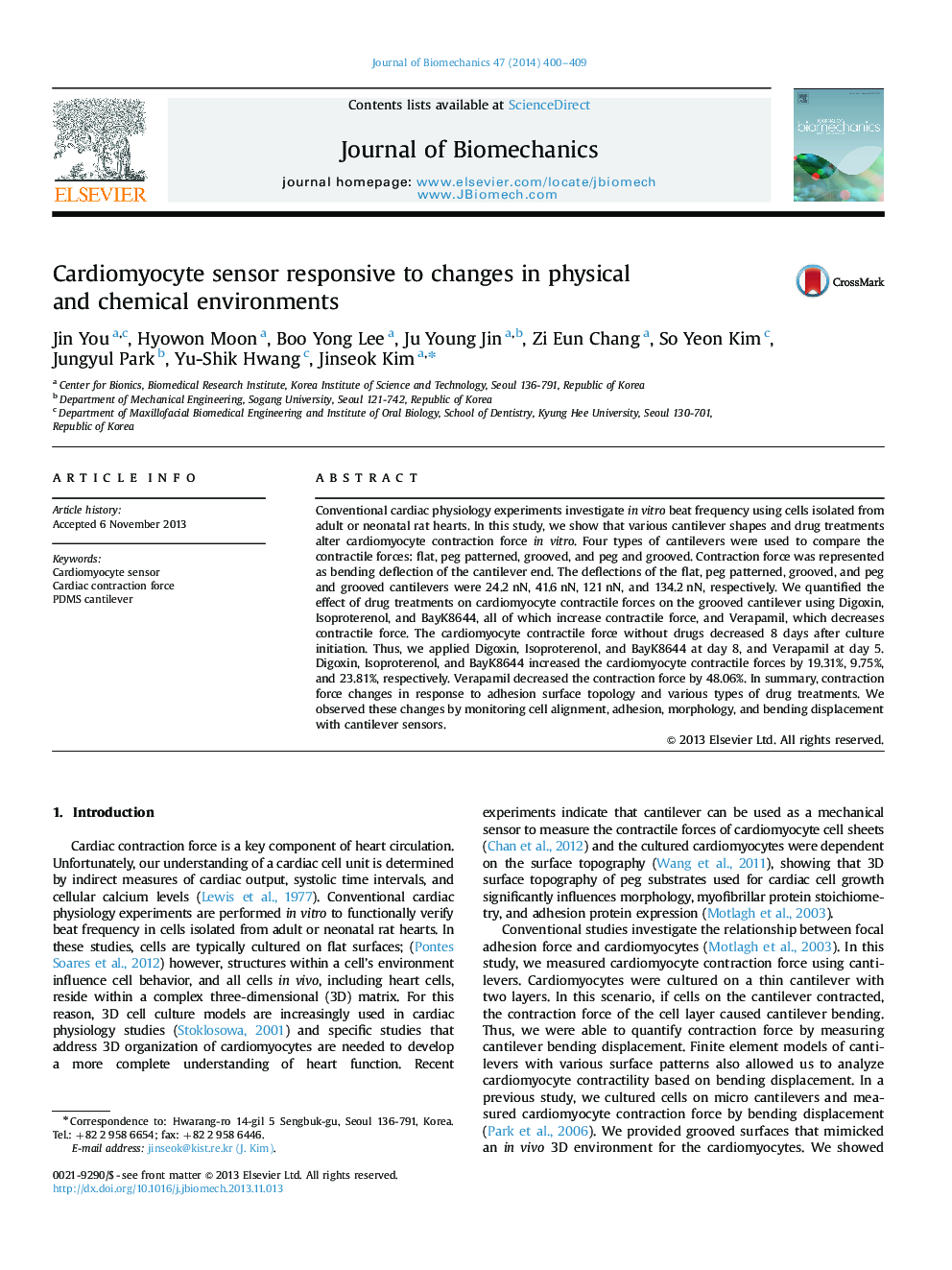| کد مقاله | کد نشریه | سال انتشار | مقاله انگلیسی | نسخه تمام متن |
|---|---|---|---|---|
| 10431548 | 910218 | 2014 | 10 صفحه PDF | دانلود رایگان |
عنوان انگلیسی مقاله ISI
Cardiomyocyte sensor responsive to changes in physical and chemical environments
ترجمه فارسی عنوان
سنسور قلب و عروق پاسخگو به تغییرات محیط فیزیکی و شیمیایی است
دانلود مقاله + سفارش ترجمه
دانلود مقاله ISI انگلیسی
رایگان برای ایرانیان
موضوعات مرتبط
مهندسی و علوم پایه
سایر رشته های مهندسی
مهندسی پزشکی
چکیده انگلیسی
Conventional cardiac physiology experiments investigate in vitro beat frequency using cells isolated from adult or neonatal rat hearts. In this study, we show that various cantilever shapes and drug treatments alter cardiomyocyte contraction force in vitro. Four types of cantilevers were used to compare the contractile forces: flat, peg patterned, grooved, and peg and grooved. Contraction force was represented as bending deflection of the cantilever end. The deflections of the flat, peg patterned, grooved, and peg and grooved cantilevers were 24.2Â nN, 41.6Â nN, 121Â nN, and 134.2Â nN, respectively. We quantified the effect of drug treatments on cardiomyocyte contractile forces on the grooved cantilever using Digoxin, Isoproterenol, and BayK8644, all of which increase contractile force, and Verapamil, which decreases contractile force. The cardiomyocyte contractile force without drugs decreased 8 days after culture initiation. Thus, we applied Digoxin, Isoproterenol, and BayK8644 at day 8, and Verapamil at day 5. Digoxin, Isoproterenol, and BayK8644 increased the cardiomyocyte contractile forces by 19.31%, 9.75%, and 23.81%, respectively. Verapamil decreased the contraction force by 48.06%. In summary, contraction force changes in response to adhesion surface topology and various types of drug treatments. We observed these changes by monitoring cell alignment, adhesion, morphology, and bending displacement with cantilever sensors.
ناشر
Database: Elsevier - ScienceDirect (ساینس دایرکت)
Journal: Journal of Biomechanics - Volume 47, Issue 2, 22 January 2014, Pages 400-409
Journal: Journal of Biomechanics - Volume 47, Issue 2, 22 January 2014, Pages 400-409
نویسندگان
Jin You, Hyowon Moon, Boo Yong Lee, Ju Young Jin, Zi Eun Chang, So Yeon Kim, Jungyul Park, Yu-Shik Hwang, Jinseok Kim,
